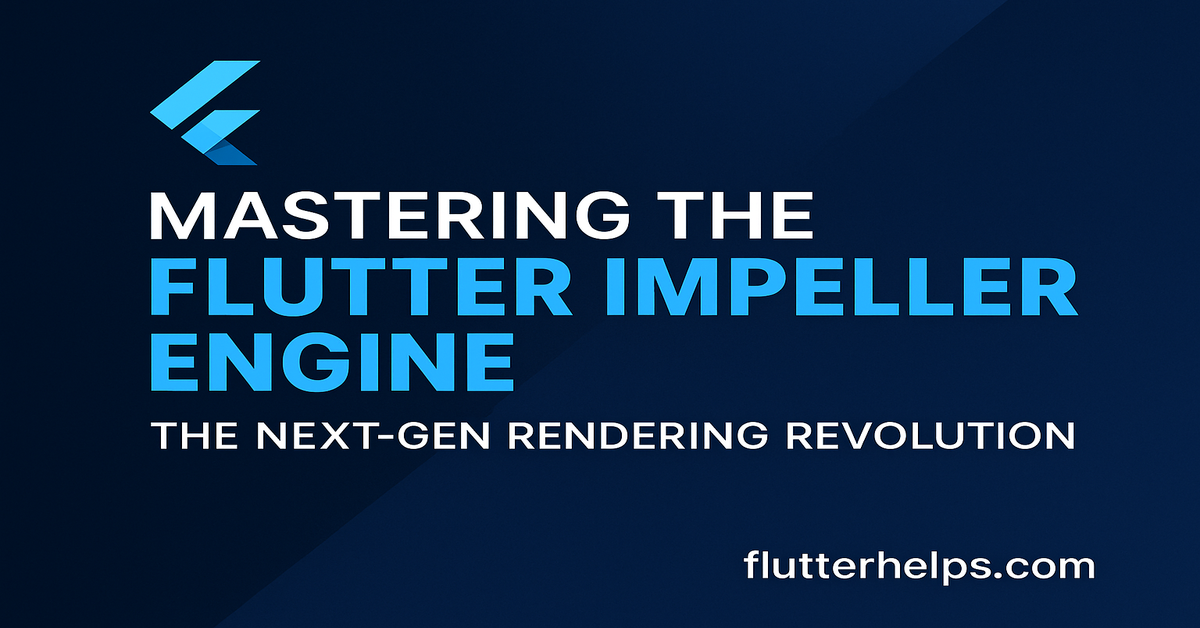Introduction
The Flutter Impeller Engine is Google’s brand-new rendering backend designed to supercharge your Flutter apps in 2025. By replacing the legacy Skia pipeline, Impeller delivers consistent 60+ FPS, eliminates jank from shader compilation, and unlocks advanced GPU features. In this guide, you’ll learn exactly what makes Impeller special, how its core architecture works, and step-by-step instructions to enable it in your projects.
What Is the Flutter Impeller Engine?
At its core, the Impeller Engine is a low-level graphics layer built specifically for modern mobile GPUs. Rather than compiling shaders at runtime—an operation that can cause sudden frame drops—Impeller precompiles shaders at build time and pipelines draw calls efficiently across multiple GPU queues. The result? Smoother animations, faster layer composition, and a more responsive user experience.
For a deep dive into Impeller’s design, check out the official Flutter docs https://docs.flutter.dev/perf/impeller.
Why Use Impeller in 2025?
- Rock-Solid Frame Rates
Precompiled shaders and multithreaded rendering ensure your UI hits 60+ FPS on mid-range devices. - Minimal Frame Jank
Offloading heavy graphics work to background queues stops UI hangs when your app is processing logic. - Advanced GPU Features
Unlock dynamic resolution scaling, mesh-based rendering, and new blending modes for richer visuals. - Future-Proof Performance
Impeller’s architecture is primed for emerging GPU capabilities, making your app ready for years to come.
Core Architecture
Shader Precompilation
By compiling shaders at build time, Impeller eliminates runtime hitches. Use the flutter shader warm-up command in your CI pipeline to preload all shaders.
Multi-Queue Rendering
Impeller divides work between UI rendering and offscreen compute queues. This separation boosts throughput and reduces contention.
Layered Composition
Instead of redrawing the entire screen, Impeller only composites layers that have changed—minimizing overdraw and speeding up screen updates.
How to Enable Impeller
- Upgrade Flutter SDK bashCopyEdit
flutter upgradeEnsure you’re on Flutter 3.13.10 or newer. - Enable the Impeller Flag xmlCopyEdit
<!-- AndroidManifest.xml --> <meta-data android:name="io.flutter.embedding.backend.renderer" android:value="impeller" />plistCopyEdit<!-- Info.plist --> <key>io.flutter.embedding.backend.renderer</key> <string>impeller</string> - Initialize Impeller in Code dartCopyEdit
import 'package:flutter/material.dart'; import 'package:flutter/impeller.dart'; void main() { WidgetsFlutterBinding.ensureInitialized(); Impeller.enable(); runApp(MyApp()); } - Profile and Test
Use Flutter DevTools’ Performance tab to compare raster times and shader compilation spikes before and after enabling Impeller.
Real-World Benefits
- Gaming: Achieve buttery-smooth particle effects and physics at 60+ FPS.
- Data Dashboards: Render large, animated charts without frame drops.
- Everyday UI: Enhance transitions, parallax scrolling, and motion effects for a premium feel.
For more tips on optimizing your Flutter apps, see our Flutter Performance Guide.
Best Practices
- Warm Up Shaders: Automate shader precompilation during your CI build.
- Batch Draw Calls: Group similar rendering operations to leverage Impeller’s multi-queue design.
- Test Across Devices: Profile on both flagship and entry-level hardware to ensure consistent performance.
Internal Resources
Read more:
- Top Flutter Interview Questions and Answers for 2024
- What is Flutter? A Comprehensive Guide for Beginners
Conclusion
The Flutter Impeller Engine is the most significant rendering upgrade Flutter has seen. By understanding its architecture, enabling it correctly, and following best practices, you’ll deliver faster, smoother apps that stand out in 2025’s competitive market. Ready to get started? Enable Impeller today and transform your Flutter experiences!
